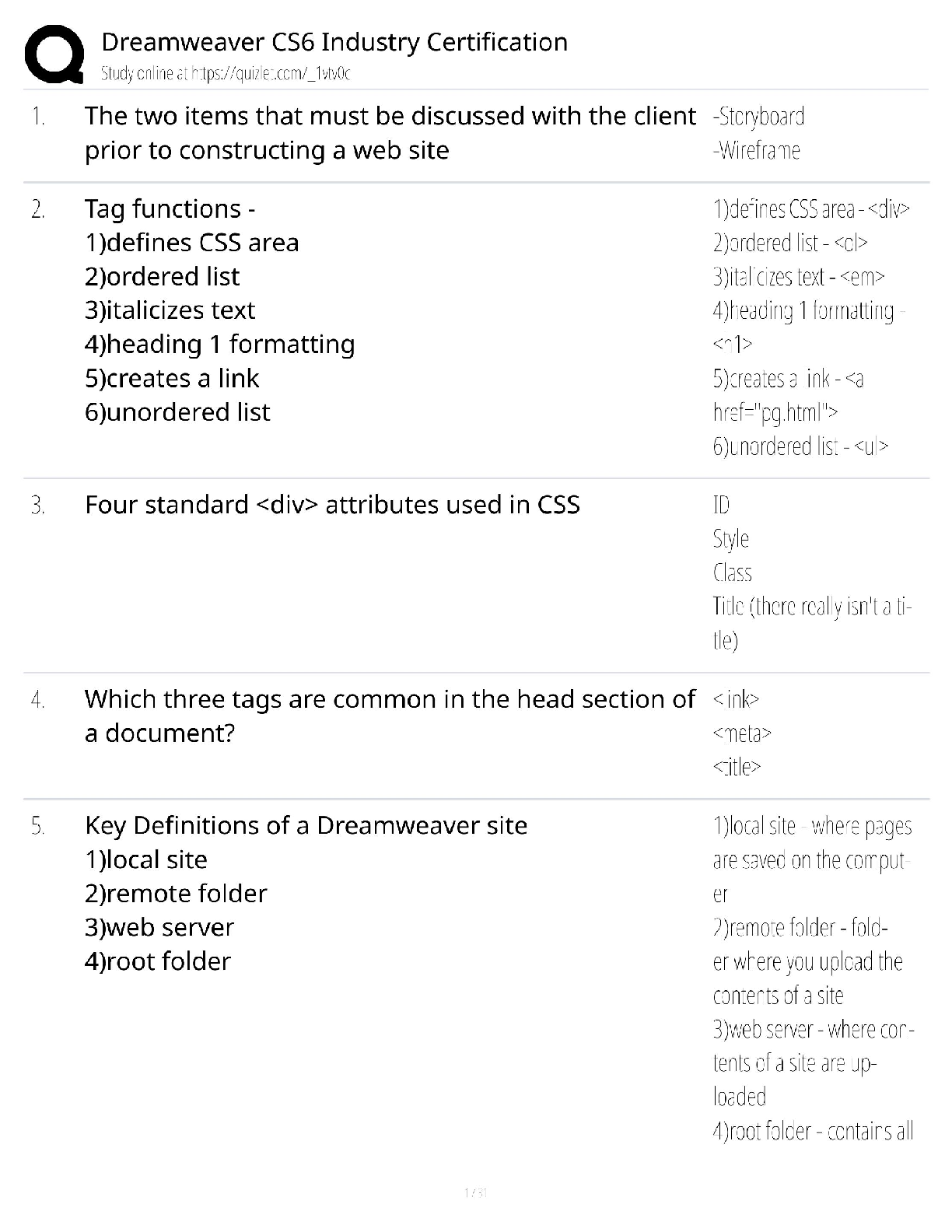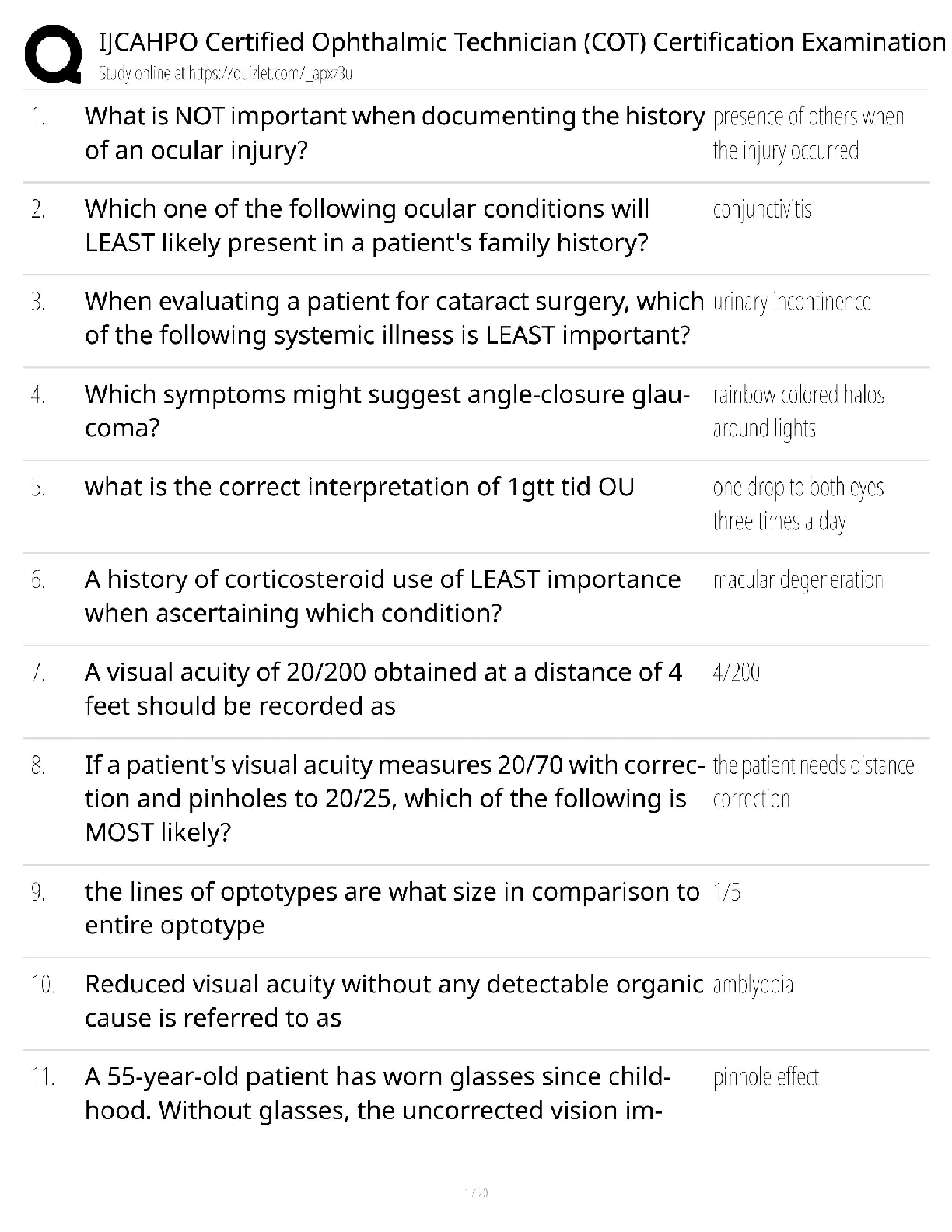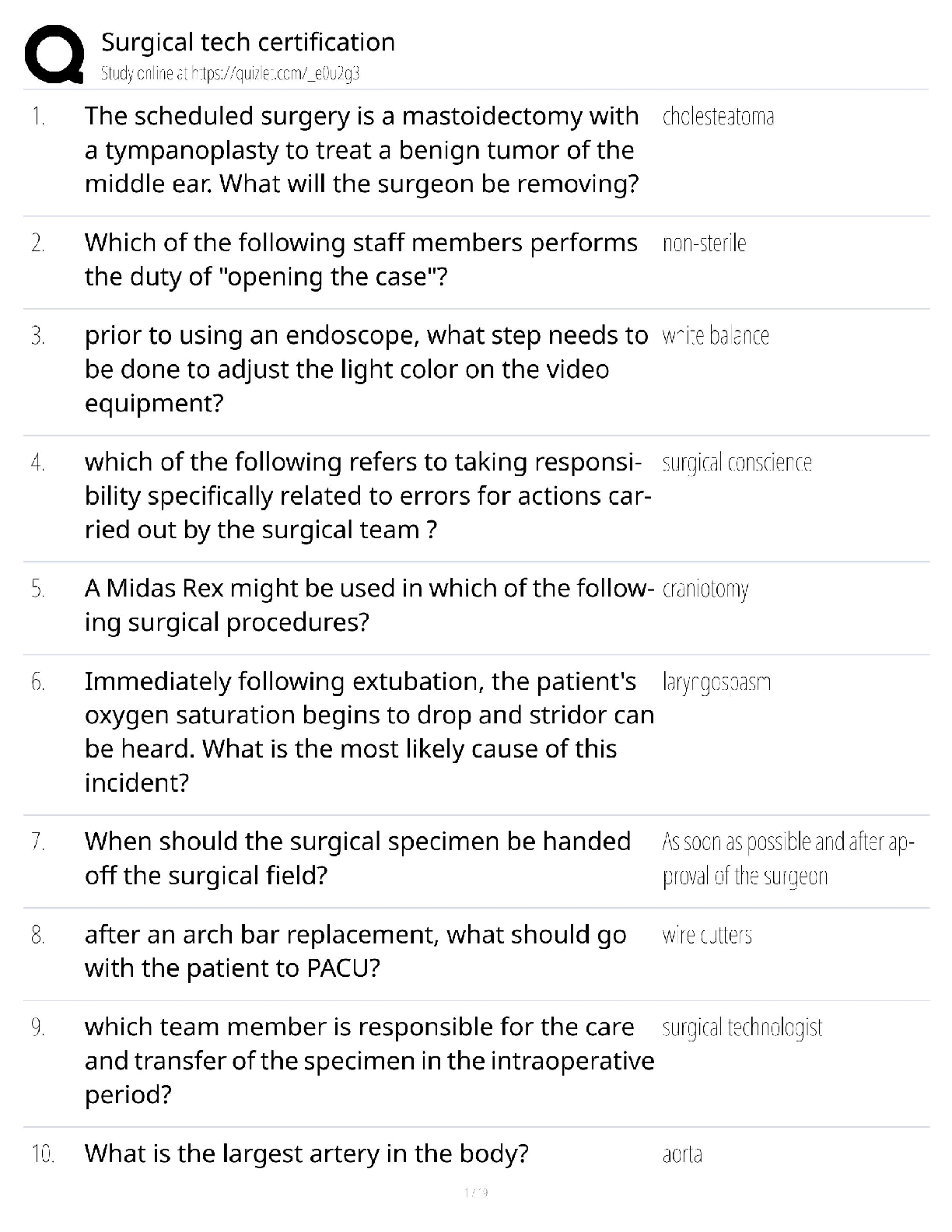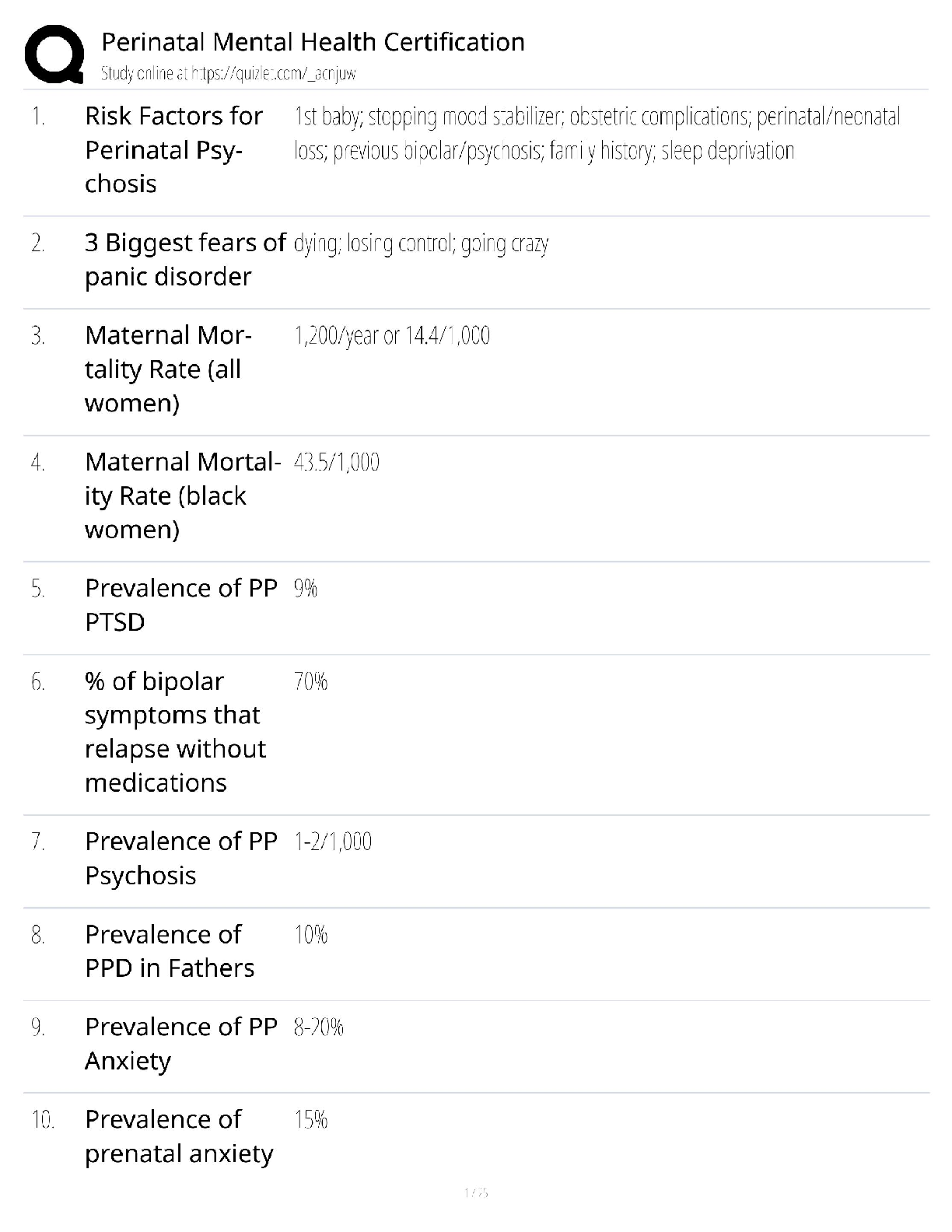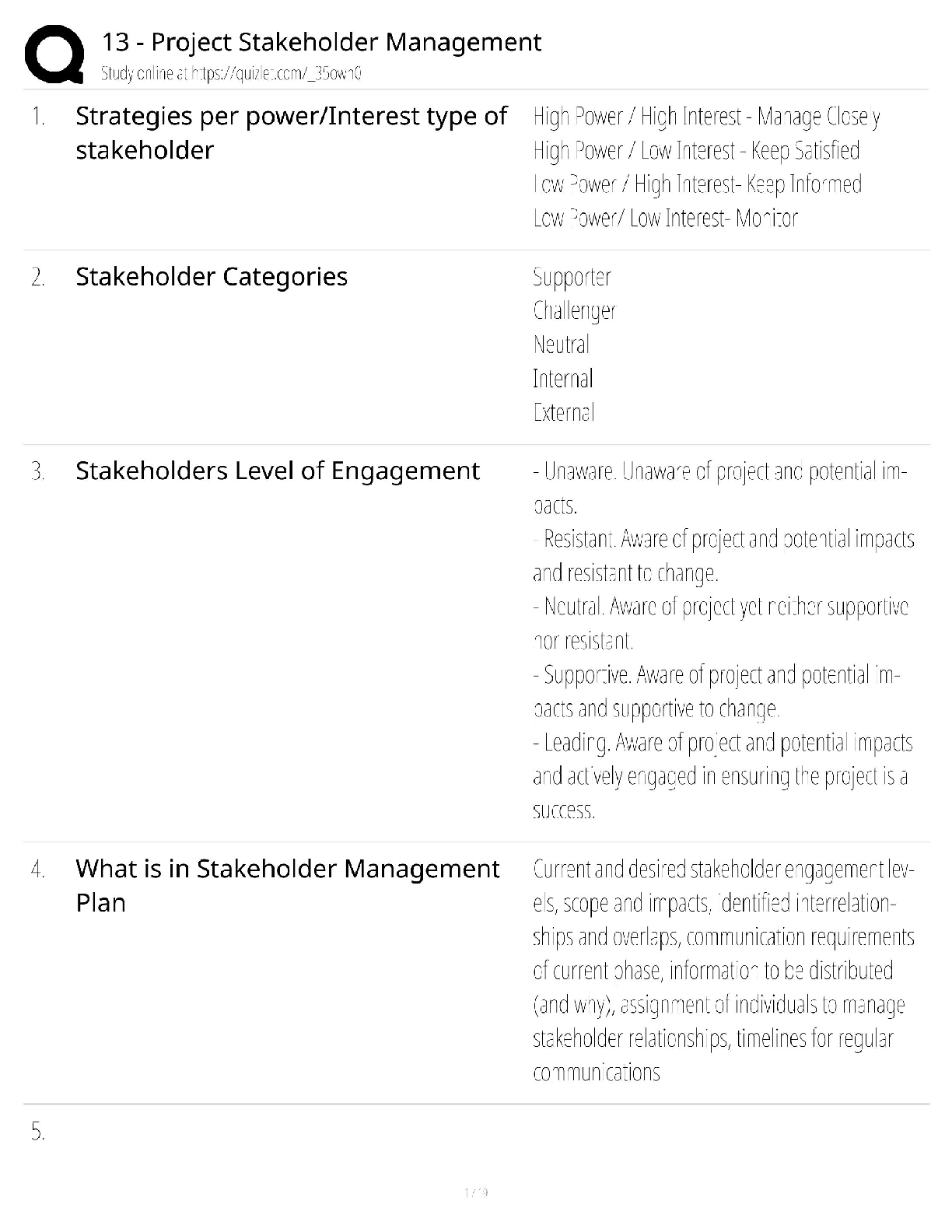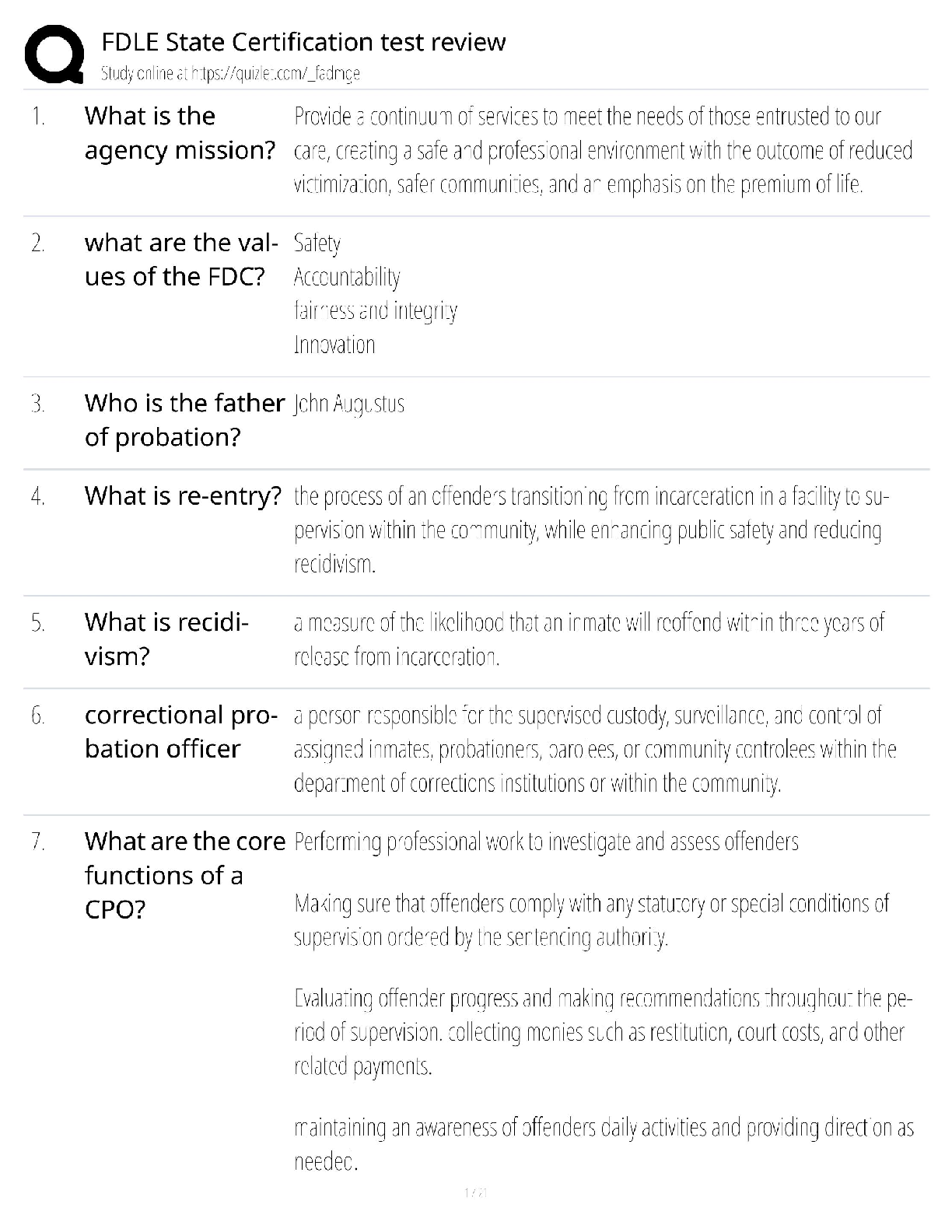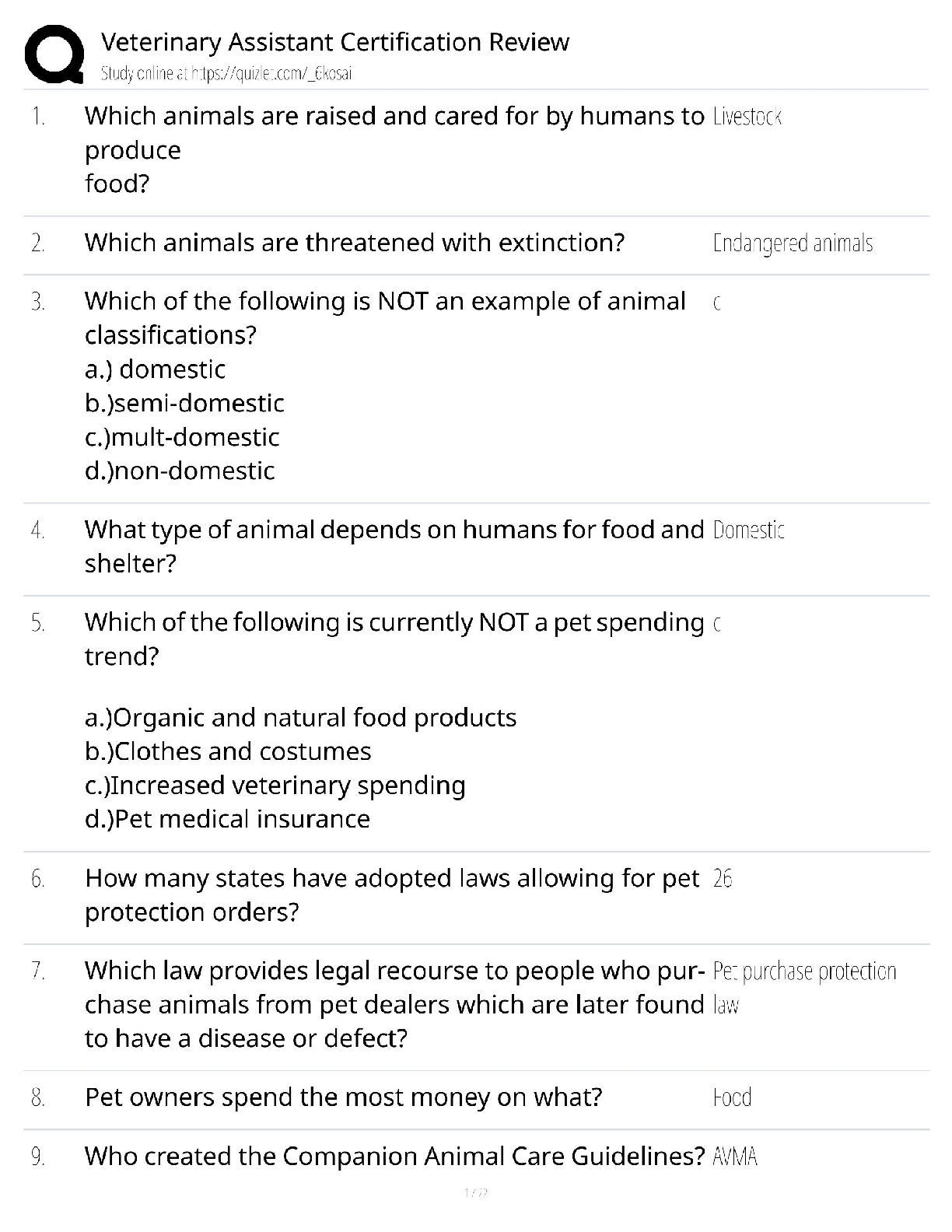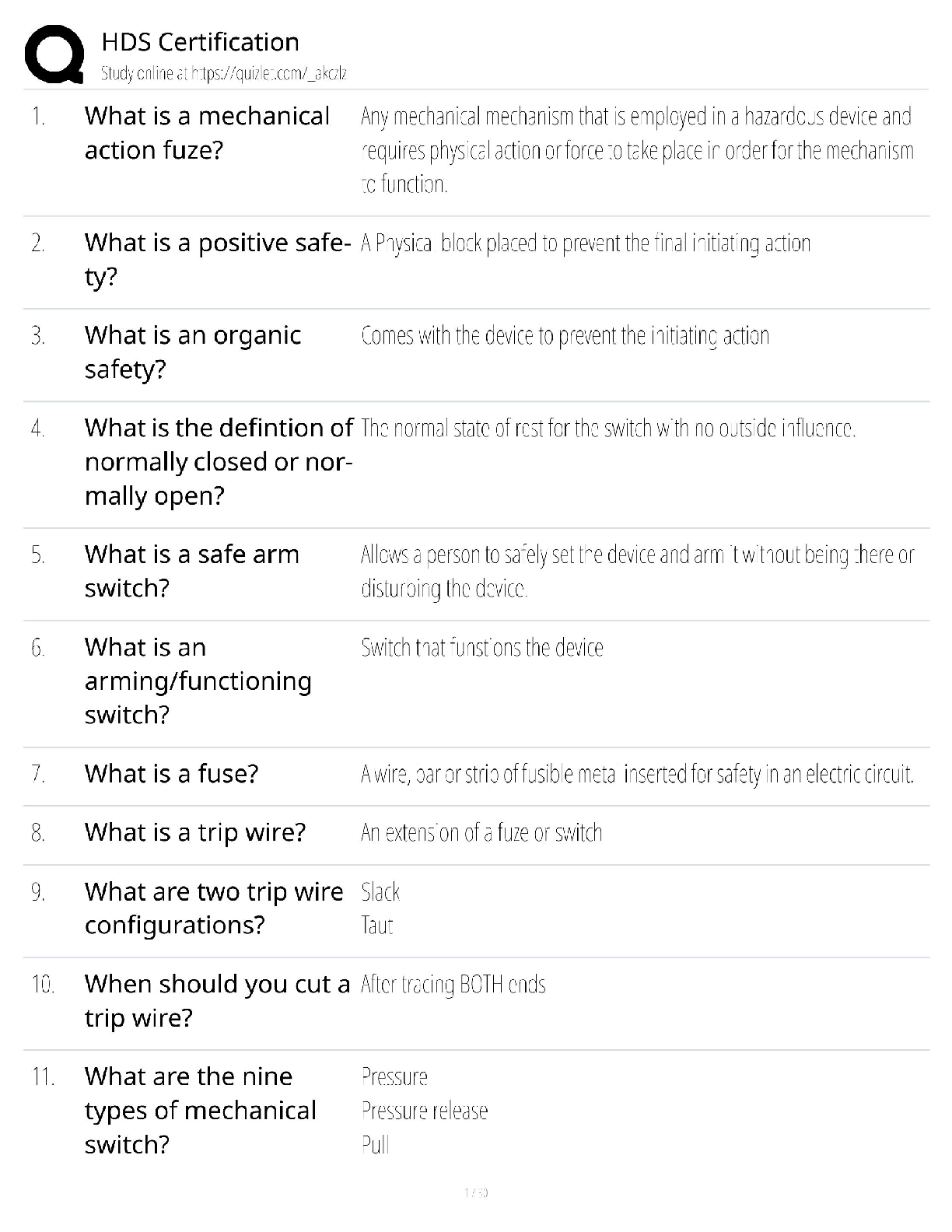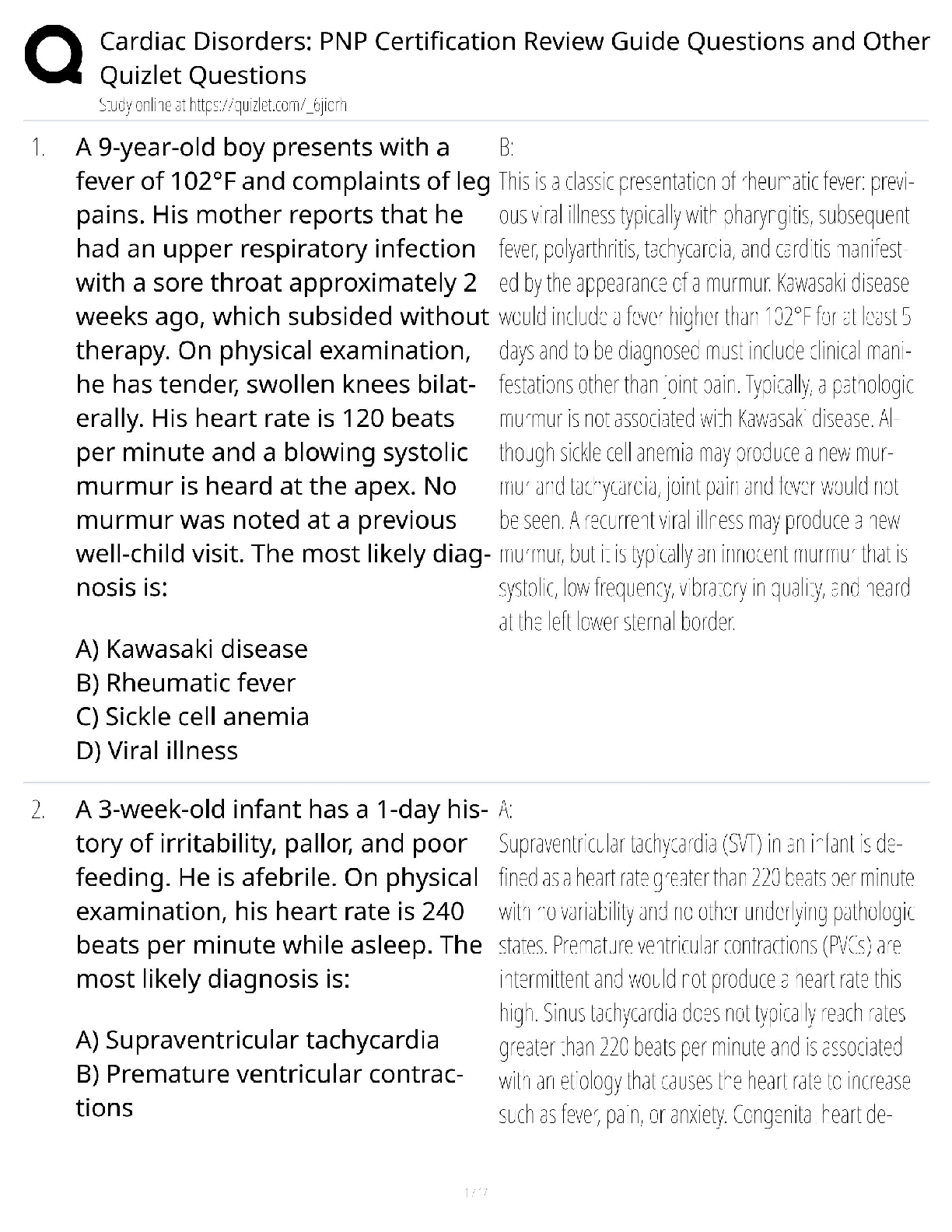*NURSING > QUESTIONS & ANSWERS > Review Test Submission: Quiz - Week 4 TEST QUESTIONS WITH ANSWERS 2020 SOLUTION Walden University (All)
Review Test Submission: Quiz - Week 4 TEST QUESTIONS WITH ANSWERS 2020 SOLUTION Walden University
Document Content and Description Below
Review Test Submission: Quiz - Week 4 TEST QUESTIONS WITH ANSWERS 2020 SOLUTION Walden University Question 1 https://www.coursehero.cWom/hfilee/3n48c39o54m9/Rpevlieewt-iTnesgt-Sutbhmiisssioqn-u ... Quiizz-,Wdeeikd-4-yNoURuS-6c5o01mD-2ppdlfy/ 0 out of 0 points with Walden University’s Code of Conduct including the expectations for academic integrity? Question 2 1 out of 1 points An 82-year-old female was admitted to the hospital with confusion and severe hypotension. Her body’s compensatory mechanisms are increased heart rate, vasoconstriction, and movement of large volumes of interstitial fluid to the vascular compartment. What kind of shock does the nurse suspect the patient is experiencing? Question 3 1 out of 1 points Most cases of combined systolic and diastolic hypertension have no known cause and are documented on the chart as hypertension. Question 4 1 out of 1 points A 50-year-old male visits the cardiologist for an EKG. Results indicate that he has no PR interval and a variable QRS rate with rhythm irregularity. Which of the following is the most likely diagnosis to be recorded on the chart? Question 5 1 out of 1 points A 51-year-old male is at the health clinic for an annual physical exam. After walking from the car to the clinic, he developed substernal pain. He also reported discomfort in his left shoulder and his jaw, lasting 2 to 3 minutes and then subsiding with rest. He indicates that this has occurred frequently over the past few months with similar exertion. The nurse suspects he is most likely experiencing: https://www.coursehero.com/file/34839549/Review-Test-Submission-Quiz-Week-4-NURS-6501D-2pdf/ Question 6 1 out of 1 points A 50-year-old male with a 30-year history of smoking was diagnosed with bronchogenic cancer. He developed edema and venous distention in the upper extremities and face. Which of the following diagnosis will the nurse observe on the chart? Question 7 1 out of 1 points A 70-year-old female is in the hospital for pelvic fracture. She develops pulmonary thromboembolism. The nurse realizes this embolus is composed of: Question 8 1 out of 1 points A nurse monitors the patient for when rapid onset of malignant hypertension results. Question 9 1 out of 1 points A 60-year-old male undergoes surgery for a bone fracture. Which of the following nursing measures would be most effective for preventing pulmonary embolism (PE) in this patient? . Question 10 1 out of 1 points A 54-year-old male is diagnosed with left bundle branch block. Which of the following structures would not receive an electrical impulse? https://www.coursehero.com/file/34839549/Review-Test-Submission-Quiz-Week-4-NURS-6501D-2pdf/ Question 11 1 out of 1 points When a nurse checks the patient for orthostatic hypotension, what did the nurse have the patient do? Question 12 1 out of 1 points A 50-year-old male is diagnosed with pulmonary embolism (PE). Which of the following symptoms most likely occurred before treatment? Question 13 1 out of 1 points While planning care for a patient with superior vena cava syndrome (SVCS), which principle should the nurse remember? SVCS is a progressive of the superior vena cava (SVC) that leads to venous distention of the upper extremities and head. Question 14 1 out of 1 points An 80-year-old female is in the hospital for a bone fracture. While there she develops a large, nonlethal pulmonary embolus. Which of the following is a direct result of the obstruction to pulmonary blood flow? Question 15 1 out of 1 points A 52-year-old female is diagnosed with coronary artery disease. The nurse assesses for myocardial: Question 16 1 out of 1 points A 65-year-old male presents for a routine checkup. A blood pressure check reveals a systolic pressure of 160 mm Hg and a diastolic pressure of 70 mm Hg. Which of the following is the most likely cause of this type of pressure elevation? Question 17 1 out of 1 points Which condition should cause the nurse to assess for high-output failure in a patient? Question 18 1 out of 1 points A 50-year-old obese male with hypertension and coronary artery disease visits a nutritionist for food counseling. He has an elevated level of low-density lipoprotein (LDL) and a low level of high-density lipoprotein (HDL). Which of the following should the nurse advise him to avoid? Question 19 1 out of 1 points Which of the following findings in the patient with Raynaud disease would indicate a need for further teaching? . Question 20 1 out of 1 points A 75-year-old female has been critically ill with multiple organ dysfunction syndrome (MODS) for longer than a week and has developed a severe oxygen supply and demand imbalance. The statement that best describes this imbalance is which of the following? . Question 21 1 out of 1 points A 65-year-old male is diagnosed with chronic pulmonary disease and elevated pulmonary vascular resistance. Which of the following heart failures should the nurse assess for in this patient? Question 22 1 out of 1 points A 56-year-old male is diagnosed with coronary artery disease. Which of the following modifiable risk factors would the nurse suggest the patient change? Question 23 1 out of 1 points A 60-year-old male presents to his primary care provider reporting chest pain. He is diagnosed with atherosclerosis. This disease is caused by: Question 24 1 out of 1 points A 35-year-old male presents with pulmonary hypertension. Testing reveals he is in right heart failure. Which of the following is the most likely diagnosis the nurse will see listed on the chart? Question 25 1 out of 1 points A 32-year-old female presents with lower leg pain, with swelling and redness. While obtaining the patient’s history, which finding could have caused her condition? Question 26 1 out of 1 points A 62-year-old male presents to his primary care provider reporting chest pain at rest and with exertion. He does not have a history of coronary artery disease and reports that the pain often occurs at night. He is most likely experiencing which type of angina? Question 27 0 out of 1 points When a patient has a massive pulmonary embolism (PE), what complications will the nurse monitor for? Question 28 1 out of 1 points A 59-year-old female is diagnosed with left ventricular failure. If a decrease in kidney perfusion occurs, the nurse knows this would ultimately cause: Question 29 1 out of 1 points A 60-year-old male is diagnosed with cerebral aneurysm. Where does the nurse suspect the cerebral aneurysm is located? 1 out of 1 points Which organ should the nurse monitor closely since it is often the first to fail in patients with multiple organ dysfunction syndrome (MODS)? Question 31 1 out of 1 points A 50-year-old female presents with a low heart rate and low blood pressure. She is given an intravenous (IV) infusion of fluids. The increase in atrial distension results in: [Show More]
Last updated: 3 years ago
Preview 1 out of 8 pages

Buy this document to get the full access instantly
Instant Download Access after purchase
Buy NowInstant download
We Accept:

Reviews( 0 )
$13.00
Can't find what you want? Try our AI powered Search
Document information
Connected school, study & course
About the document
Uploaded On
Sep 05, 2020
Number of pages
8
Written in
All
Additional information
This document has been written for:
Uploaded
Sep 05, 2020
Downloads
0
Views
154

 answers.png)











